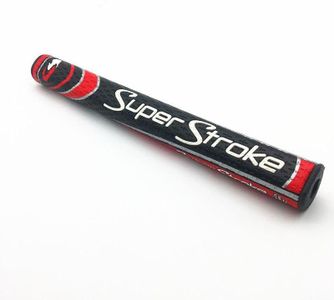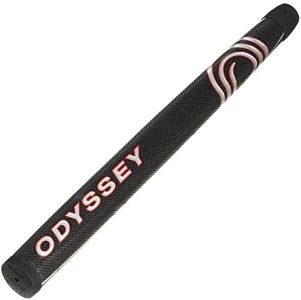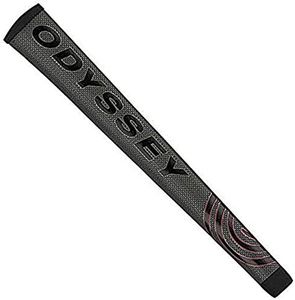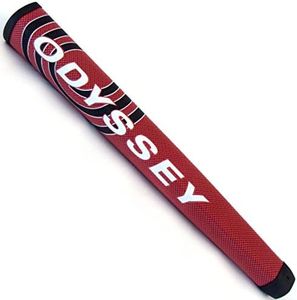We Use CookiesWe use cookies to enhance the security, performance,
functionality and for analytical and promotional activities. By continuing to browse this site you
are agreeing to our privacy policy
10 Best Putter Grips
From leading brands and best sellers available on the web.Buying Guide for the Best Putter Grips
Choosing the right putter grip can make a significant difference in your putting performance and overall feel on the green. The grip is the only contact you have with the putter, so it’s important to find one that complements your putting style, hand size, and comfort preferences. By understanding the main features and how they affect your stroke, you can make a more confident choice that enhances your game.Grip SizeGrip size refers to the thickness or diameter of the putter grip, and it can range from slim to mid-size to oversized (sometimes called jumbo). This aspect is important because it influences how your hands interact with the putter and how much wrist movement you can generate. Thinner grips allow for more wrist action, which can benefit players who prefer a lot of feel and touch, but may make it harder to control for those with a tendency to be 'wristy.' Mid-size grips offer a balance between control and feel and are a common choice among many golfers. Oversized grips help minimize wrist movement and promote a smoother, pendulum-like stroke, making them popular with golfers who want to reduce grip pressure or struggle with shaky hands. The right size for you depends on your hand size and your preferred putting style—smaller hands or players valuing tactile feedback may opt for slimmer grips, while those wanting stability or with larger hands might prefer bulkier grips.
Grip MaterialThe material of the grip affects its texture, tackiness, and overall comfort. Common materials include rubber, synthetic, and leather. Rubber grips tend to be durable and provide a soft yet secure feel, making them a good all-round choice. Synthetic grips can offer a variety of feels and finishes, with some designed to repel moisture or increase tackiness in wet conditions, making them suitable for players who play in diverse weather. Leather grips provide a traditional look and feel, often preferred for their classic aesthetics, though they may require more maintenance. Ultimately, the right material for you comes down to personal preference for feel in your hands and the typical climate in which you play.
Grip ShapeGrip shape refers to the contour or profile of the grip, which can be round, pistol (with a pronounced flare at the top), or have a flat front. Pistol grips feature an ergonomic design that can help guide your hands into a natural position and provide more comfort, especially for golfers with a traditional grip style. Flat-front or paddle-shaped grips help align your thumbs and promote a straight-back, straight-through stroke, making them popular for players seeking consistency. Round grips are less common but can offer a more neutral feel for those who don’t use a traditional grip. Choosing the right shape depends on your hand placement and the stroke technique you find most comfortable.
Grip WeightGrip weight refers to how heavy or light the grip is, and this can influence the overall feel and balance of the putter. Heavier grips can make the putter head feel lighter, potentially improving tempo for some strokes, while lighter grips do the opposite, highlighting the weight of the putter head itself and possibly providing more feel. When picking grip weight, consider how it affects your current putter—if your putter feels too head-heavy or too balanced, changing grip weight could help fine-tune the club’s performance to your liking.
TextureTexture relates to the surface pattern of the grip, affecting how securely you can hold it and how comfortable it feels in your hands. Some grips have a rough, heavily patterned surface designed to maximize grip, even in wet or sweaty conditions—these are great for players whose hands tend to slip or who play in humid climates. Smoother grips offer a softer touch but may not be as secure in slippery conditions. Assess your preferences for grip security and comfort when deciding on texture, keeping in mind any tendency for your hands to sweat or the typical weather where you play.














